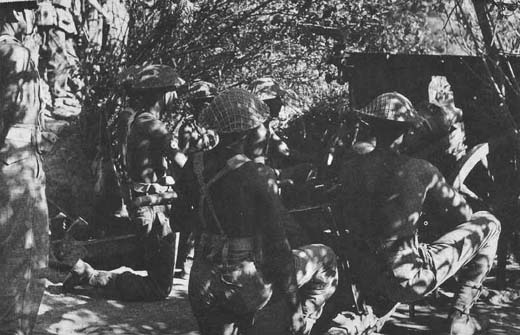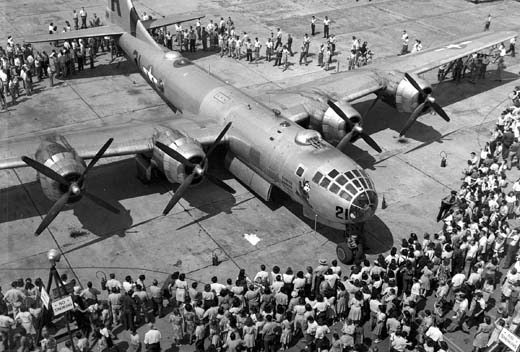Air Operations, Aleutians
28th Composite Bomb Group B-24s attack Amchitka's Constatine Harbor.
[Air Operations, Europe
BOMBER COMMANDEvening Ops:
- 17 aircraft lay mines in Kiel Bay and off Denmark.
- 3 Wellingtons are lost.
Air Operations, New Guinea
V Fighter Command P-40s attack bridges and trails in the Owen Stanley Mountains.
[Baltic Sea
U-446 sinks after hitting an Allied air-laid mine.
| Class | Type VIIC |
| CO | Oberleutnant zur SeeHellmuth-Bert Richard |
| Location | Baltic, off Danzig |
| Cause | Depth charge |
| Casualties | 23 |
| Survivors | 18 |
\
Burma
The British begin their first land counteroffensive against the Japanese in the Arakan, an area along the Bay of Bengal coast. The offensive fails and the 14th Indian Division suffers heavy losses.
Indian Artillery Gunners |
 |
Eastern Front
The Russians continue to hold the Germans in the northwest suburbs of Stalingrad as house-to-house fighting breaks out.
NORTHERN SECTORThe 11th Army begins its counterattack at Gaitolovo. Soviet forces in the salient are attacked on both flanks, XXVI and XXX Corps slicing through to isolate virtually the entire force. The constricted forces inside the pocket are subjected to ferocious artillery and air attack, suffering terrible casualties.
SOUTHERN SECTORThe 6th Army fends off more attacks by the 1st Guards, 24th and 66th Armies, keeping the German forces north of Stalingrad fully occupied.
Inside the city, the battle for the Nail Factory continues. The Soviet battalion is cut in two as hand-to-hand fighting rages through the ruined machinery and buildings. Under fierce attack, the Soviets abandon the factory. Elements fight to the end in the Univermaag store, while others fall back to the Volga, establishing strong positions on the corner of Krasnopiterskaya and Komsomolskaya Streets. The fighting here rages for five bloody days. Further heavy fighting also rages on the slopes of the Mamayev Kurgan and in the grain elevator.
After protracted fighting, the XLVIII Panzer Corps clears the bed of the Tsaritsyn stream, isolating the 92nd and 42nd Rifle Brigades on the southern wing of the 62nd Army. The 14th and 24th Panzer, 29th Motorized and 94th Infantry Divisions are attacking the Soviet brigades.
[Pacific
- The US submarine Grouper (SS-214) sinks the Japanese army cargo ship Tone Maru (4070t) in the China Sea east of Shanghai.
- The US submarine Trout (SS-202) sinks the Japanese auxiliary netlayer Koei Maru (863t) south of Truk.
Sweden, Politics
In the national elections the pro-Nazi candidates do very badly.
[ First Prototype of the B-29 |
 |